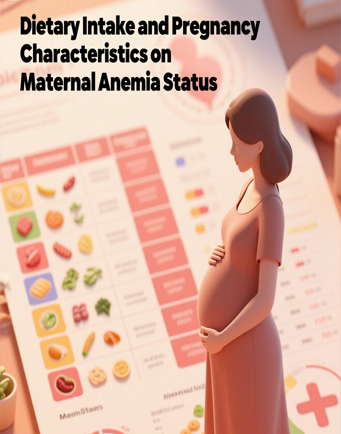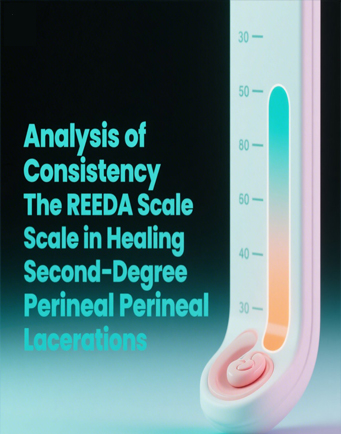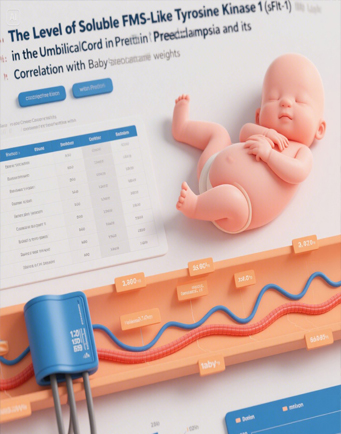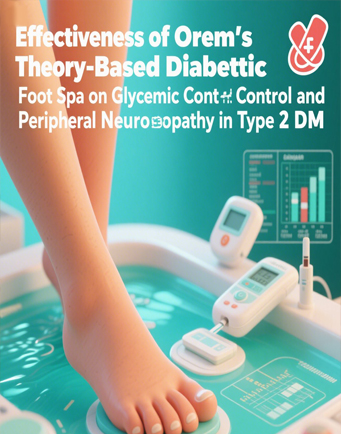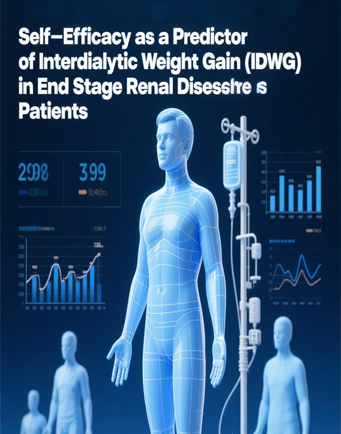The Implementation of Passive Leg Raising in Shocked Patients: Scoping Review
Downloads
Shock is a life-threatening condition. It is essential to perform hemodynamic support on shocked patients to restore adequate circulation. Passive leg raising (PLR) is a critical act to assess fluid responsiveness which can provide significant information about fluid needs of shocked patients. The present study aimed to identify the implementation of passive leg raising in shocked patients. The scoping review was the method used in the present study. Relevant literatures were obtained from PubMed, CINAHL and Google Scholar Search engines from 2013 to 2023. The articles were manually extracted through tabulation and the data were thematically analyzed with an exploratory descriptive approach. Nine articles were found relevant and hence were included in the present study. The findings of the 9 articles revealed that the implementation of passive leg raising in shocked patients was an early strategy in assessing fluid responsiveness and fluid administration could be decreased after 48 hours of ICU admission. The findings of the current study suggested that the implementation of PLR significantly assessed fluid responsiveness which in the end guided in conducting fluid resuscitation in shocked patients and could reduce fluid administration in shocked patients for the first 48 hours of ICU admission. Therefore, health professionals working in critical care units including critical care nurses should consider performing PLR to shocked patients.
Alvarado Sánchez, J. I., Caicedo Ruiz, J. D., Diaztagle Fernández, J. J., Cruz Martínez, L. E., Carreño Hernández, F. L., Santacruz Herrera, C. A., & Ospina-Tascón, G. A. (2023). Variables influencing the prediction of fluid responsiveness: a systematic review and meta-analysis. Critical Care, 27(1), 361. https://doi.org/10.1186/s13054-023-04629-w
Assadi, F. (2017). Passive leg raising: Simple and reliable technique to prevent fluid overload in critically ill patients. International Journal of Preventive Medicine, 8(1), 48. https://doi.org/10.4103/ijpvm.IJPVM_11_17
Beurton, A., Teboul, J.-L., Girotto, V., Galarza, L., Anguel, N., Richard, C., & Monnet, X. (2019). Intra-Abdominal Hypertension Is Responsible for False Negatives to the Passive Leg Raising Test. Critical Care Medicine, 47(8), e639–e647. https://doi.org/10.1097/CCM.0000000000003808
Blumlein, D., & Griffiths, I. (2022). Shock: aetiology, pathophysiology and management. British Journal of Nursing, 31(8), 422–428. https://doi.org/10.12968/bjon.2022.31.8.422
Chadi, B. H. (2013). Cardiac arrest: Vascular resuscitation by leg elevation. Resuscitation, 84(5), e59. https://doi.org/10.1016/j.resuscitation.2012.12.024
Cronhjort, M., Bergman, M., Joelsson-Alm, E., Divander, M.-B., Jerkegren, E., Balintescu, A., Mårtensson, J., & Svensen, C. (2017). Fluid Responsiveness Assessment Using Passive Leg Raising Test to Reduce Fluid Administration and Weight Gain in Patients with Septic Shock. Journal of Anesthesia and Perioperative Medicine, 4. https://doi.org/10.24015/JAPM.2017.0049
Dell’Anna, A. M., Torrini, F., & Antonelli, M. (2019). Shock: Definition and Recognition (pp. 7–20). https://doi.org/10.1007/978-3-319-69269-2_2
Douglas, I. S., Alapat, P. M., Corl, K. A., Exline, M. C., Forni, L. G., Holder, A. L., Kaufman, D. A., Khan, A., Levy, M. M., Martin, G. S., Sahatjian, J. A., Seeley, E., Self, W. H., Weingarten, J. A., Williams, M., & Hansell, D. M. (2020a). Fluid Response Evaluation in Sepsis Hypotension and Shock. Chest, 158(4), 1431–1445. https://doi.org/10.1016/j.chest.2020.04.025
Douglas, I. S., Alapat, P. M., Corl, K. A., Exline, M. C., Forni, L. G., Holder, A. L., Kaufman, D. A., Khan, A., Levy, M. M., Martin, G. S., Sahatjian, J. A., Seeley, E., Self, W. H., Weingarten, J. A., Williams, M., & Hansell, D. M. (2020b). Fluid Response Evaluation in Sepsis Hypotension and Shock. Chest, 158(4), 1431–1445. https://doi.org/10.1016/j.chest.2020.04.025
Elwan, M., Roshdy, A., Elsharkawy, E., Eltahan, S., & Coats, T. (2022). Can passive leg raise predict the response to fluid resuscitation in ED? BMC Emergency Medicine, 22(1), 172. https://doi.org/10.1186/s12873-022-00721-6
Hasanin, A. (2015). Fluid responsiveness in acute circulatory failure. Journal of Intensive Care, 3(1), 50. https://doi.org/10.1186/s40560-015-0117-0
He, H. W., & Liu, D. W. (2016). Passive leg raising in intensive care medicine. Chinese Medical Journal, 129(14). https://doi.org/10.4103/0366-6999.185866
Jacquet-Lagrèze, M., Bouhamri, N., Portran, P., Schweizer, R., Baudin, F., Lilot, M., Fornier, W., & Fellahi, J.-L. (2019a). Capillary refill time variation induced by passive leg raising predicts capillary refill time response to volume expansion. Critical Care, 23(1), 281. https://doi.org/10.1186/s13054-019-2560-0
Jacquet-Lagrèze, M., Bouhamri, N., Portran, P., Schweizer, R., Baudin, F., Lilot, M., Fornier, W., & Fellahi, J.-L. (2019b). Capillary refill time variation induced by passive leg raising predicts capillary refill time response to volume expansion. Critical Care, 23(1), 281. https://doi.org/10.1186/s13054-019-2560-0
Kuan, W. Sen, Ibrahim, I., Leong, B. S. H., Jain, S., Lu, Q., Cheung, Y. B., & Mahadevan, M. (2016). Emergency Department Management of Sepsis Patients: A Randomized, Goal-Oriented, Noninvasive Sepsis Trial. Annals of Emergency Medicine, 67(3), 367-378.e3. https://doi.org/10.1016/j.annemergmed.2015.09.010
Mallat, J., Fischer, M.-O., Granier, M., Vinsonneau, C., Jonard, M., Mahjoub, Y., Baghdadi, F. A., Préau, S., Poher, F., Rebet, O., Bouhemad, B., Lemyze, M., Marzouk, M., Besnier, E., Hamed, F., Rahman, N., Abou-Arab, O., & Guinot, P.-G. (2022). Passive leg raising-induced changes in pulse pressure variation to assess fluid responsiveness in mechanically ventilated patients: a multicentre prospective observational study. British Journal of Anaesthesia, 129(3), 308–316. https://doi.org/10.1016/j.bja.2022.04.031
Marik, P. E., & Lemson, J. (2014). Fluid responsiveness: an evolution of our understanding. British Journal of Anaesthesia, 112(4), 617–620. https://doi.org/10.1093/bja/aet590
Marik, P. E., Levitov, A., Young, A., & Andrews, L. (2013). The use of bioreactance and carotid doppler to determine volume responsiveness and blood flow redistribution following passive leg raising in hemodynamically unstable patients. Chest, 143(2). https://doi.org/10.1378/chest.12-1274
Minini, A., Abraham, P., & Malbrain, M. L. N. G. (2020). Predicting fluid responsiveness with the passive leg raising test: don’t be fooled by intra-abdominal hypertension! Annals of Translational Medicine, 8(12), 799–799. https://doi.org/10.21037/atm.2019.12.14
Monnet, X., Marik, P., & Teboul, J.-L. (2016). Passive leg raising for predicting fluid responsiveness: a systematic review and meta-analysis. Intensive Care Medicine, 42(12), 1935–1947. https://doi.org/10.1007/s00134-015-4134-1
Monnet, X., & Teboul, J. L. (2013). Assessment of volume responsiveness during mechanical ventilation: Recent advances. In Critical Care (Vol. 17, Issue 2). https://doi.org/10.1186/cc12526
Monnet, X., & Teboul, J.-L. (2015). Passive leg raising: five rules, not a drop of fluid! Critical Care, 19(1), 18. https://doi.org/10.1186/s13054-014-0708-5
Peterson, J., Pearce, P. F., Ferguson, L. A., & Langford, C. A. (2017). Understanding scoping reviews. Journal of the American Association of Nurse Practitioners, 29(1), 12–16. https://doi.org/10.1002/2327-6924.12380
Pickett, J. D., Bridges, E., Kritek, P. A., & Whitney, J. D. (2017). Passive Leg-Raising and Prediction of Fluid Responsiveness: Systematic Review. Critical Care Nurse, 37(2), 32–47. https://doi.org/10.4037/ccn2017205
Rameau, A., de With, E., & Boerma, E. C. (2017). Passive leg raise testing effectively reduces fluid administration in septic shock after correction of non-compliance to test results. Annals of Intensive Care, 7(1), 2. https://doi.org/10.1186/s13613-016-0225-6
Saugel, B., Kirsche, S. V., Hapfelmeier, A., Phillip, V., Schultheiss, C., Schmid, R. M., & Huber, W. (2013). Prediction of fluid responsiveness in patients admitted to the medical intensive care unit. Journal of Critical Care, 28(4), 537.e1-537.e9. https://doi.org/10.1016/j.jcrc.2012.10.008
Toppen, W., Aquije Montoya, E., Ong, S., Markovic, D., Kao, Y., Xu, X., Chiem, A., Cannesson, M., Berlin, D., & Barjaktarevic, I. (2020a). Passive Leg Raise: Feasibility and Safety of the Maneuver in Patients With Undifferentiated Shock. Journal of Intensive Care Medicine, 35(10), 1123–1128. https://doi.org/10.1177/0885066618820492
Toppen, W., Aquije Montoya, E., Ong, S., Markovic, D., Kao, Y., Xu, X., Chiem, A., Cannesson, M., Berlin, D., & Barjaktarevic, I. (2020b). Passive Leg Raise: Feasibility and Safety of the Maneuver in Patients With Undifferentiated Shock. Journal of Intensive Care Medicine, 35(10), 1123–1128. https://doi.org/10.1177/0885066618820492
Tricco, A. C., Lillie, E., Zarin, W., O’Brien, K. K., Colquhoun, H., Levac, D., Moher, D., Peters, M. D. J., Horsley, T., Weeks, L., Hempel, S., Akl, E. A., Chang, C., McGowan, J., Stewart, L., Hartling, L., Aldcroft, A., Wilson, M. G., Garritty, C., … Straus, S. E. (2018). PRISMA Extension for Scoping Reviews (PRISMA-ScR): Checklist and Explanation. Annals of Internal Medicine, 169(7), 467–473. https://doi.org/10.7326/M18-0850
Vincent, J.-L., & De Backer, D. (2013). Circulatory Shock. New England Journal of Medicine, 369(18), 1726–1734. https://doi.org/10.1056/NEJMra1208943
Xu, J., Peng, X., Pan, C., Cai, S., Zhang, X., Xue, M., Yang, Y., & Qiu, H. (2017). Fluid responsiveness predicted by transcutaneous partial pressure of oxygen in patients with circulatory failure: a prospective study. Annals of Intensive Care, 7(1), 56. https://doi.org/10.1186/s13613-017-0279-0
Copyright (c) 2024 JURNAL INFO KESEHATAN

This work is licensed under a Creative Commons Attribution-NonCommercial-ShareAlike 4.0 International License.
Copyright notice
Ownership of copyright
The copyright in this website and the material on this website (including without limitation the text, computer code, artwork, photographs, images, music, audio material, video material and audio-visual material on this website) is owned by JURNAL INFO KESEHATAN and its licensors.
Copyright license
JURNAL INFO KESEHATAN grants to you a worldwide non-exclusive royalty-free revocable license to:
- view this website and the material on this website on a computer or mobile device via a web browser;
- copy and store this website and the material on this website in your web browser cache memory; and
- print pages from this website for your use.
- All articles published by JURNAL INFO KESEHATAN are licensed under the Creative Commons Attribution 4.0 International License. This permits anyone to copy, redistribute, remix, transmit and adapt the work provided the original work and source is appropriately cited.
JURNAL INFO KESEHATAN does not grant you any other rights in relation to this website or the material on this website. In other words, all other rights are reserved.
For the avoidance of doubt, you must not adapt, edit, change, transform, publish, republish, distribute, redistribute, broadcast, rebroadcast or show or play in public this website or the material on this website (in any form or media) without appropriately and conspicuously citing the original work and source or JURNAL INFO KESEHATAN prior written permission.
Permissions
You may request permission to use the copyright materials on this website by writing to jurnalinfokesehatan@gmail.com.
Enforcement of copyright
JURNAL INFO KESEHATAN takes the protection of its copyright very seriously.
If JURNAL INFO KESEHATAN discovers that you have used its copyright materials in contravention of the license above, JURNAL INFO KESEHATAN may bring legal proceedings against you seeking monetary damages and an injunction to stop you using those materials. You could also be ordered to pay legal costs.
If you become aware of any use of JURNAL INFO KESEHATAN copyright materials that contravenes or may contravene the license above, please report this by email to jurnalinfokesehatan@gmail.com
Infringing material
If you become aware of any material on the website that you believe infringes your or any other person's copyright, please report this by email to jurnalinfokesehatan@gmail.com.


